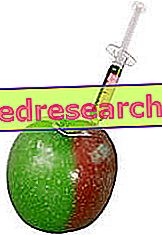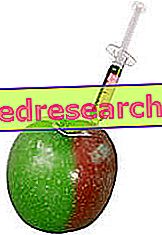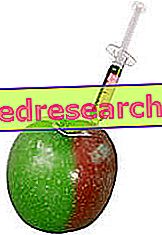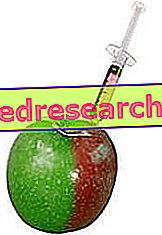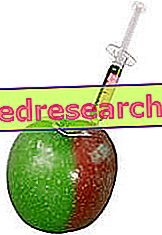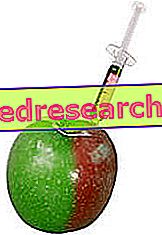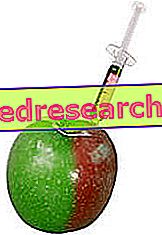E161d RUBIXANTINA (CI 75135) Rubixanthin is an orange-red colorant, of natural origin, belonging to the xanthophyll family. It is synthesized mainly from the petals of roses. At the moment no harmful effect on human health is known. ADI DOSE: / E100 E101 E101a E102 E104 E110 E120 E122 E123 E124 E127 E128 E129 E131 E132 E133 E140 E141 E142 E150a E150b E150c E150d E151 E153 E154 E155 E160a E160b E160c E160d E160e E160f E161 E161a E161b E161c E161d E161e E161f E161g E162 E163 E170 E171 E172 E173 E174 E175 E180
Category food additives
E 175 GOLD Gold is a metallic yellow-gold dye. As a coloring additive, gold may be present on the surface of confetti and / or sweets. There are antithetical theses on the side effects of gold. ADI DOSE: / E100 E101 E101a E102 E104 E110 E120 E122 E123 E124 E127 E128 E129 E131 E132 E133 E140 E141 E142 E150a E150b E150c E150d E151 E153 E154 E155 E160a E160b E160c E160d E160e E160f E161 E161a E161b E161c E161d E161e E161f E161g E162 E163 E170 E171 E172 E173 E174 E175 E180
E 172 IRON OXIDE AND HYDROXIDE (depending on color: CI 77492- 77491- 77499) The oxide and iron hydroxide are color-changing dyes (yellow, red, brown-black) of mineral origin. They can be contained in chewing gum, sugared almonds and sweets. At the moment no negative side effects are known. ADI DOSE: / no data available
E170 CALCIUM CARBONATE Calcium carbonate is a dye of mineral origin (derived from limestone), gray-white in color. It has an anti-caking function, ie it prevents the formation of lumps in powdered products. It is contained in sugared almonds, food decorations, etc. Currently it seems that there are no negative side effects, also considering the wide use by the food and pharmaceutical industry
AND 173 ALUMINUM Aluminum is a metallic gray-silver dye, naturally occurring in the form of bauxite. It may be present on the surface of confetti and / or candy. There are antithetical theses on the side effects of ingested aluminum as an additive. As a precautionary measure, it has been banned in Australia
E 174 SILVER Silver is a metallic silver-colored dye. It may be present on the surface of confetti and / or candy. It is a dye that man hardly eliminates. There are antithetical theses on the side effects of this additive. ADI DOSE: / E100 E101 E101a E102 E104 E110 E120 E122 E123 E124 E127 E128 E129 E131 E132 E133 E140 E141 E142 E150a E150b E150c E150d E151 E153 E154 E155 E160a E160b E160c E160d E160e E160f E161 E161a E161b E161c E161d E161e E161f E161g E162 E163 E170 E171 E172 E173 E174 E175 E180
The family composed of sulfur dioxide and its salts is subject to strong negative criticism from specialists in the field of nutrition and nutrition, due to problems related to its use in various products. The adaptation of the Italian legislation to the European one meant that the foods to which it is possible to add these preservatives increased, also increasing the maximum permitted doses
See E200 (Sorbic Acid) and E201 (Sodium Sorbate) E200 E201 E202 E203 E210 E211 E212 E213 E214-E2119 E220 E221 E222 E223 E224 E225 E226 E227 E228 E230 231 E232 E233 E234 E235 E236 E237 E238 E239 E240 E242 E249 E250 E251 E252 E260 E261 E262 E263 E270 E280 E284 E285 E290 E296 E297
See E200 (Sorbic Acid) and E201 (Sodium Sorbate) E200 E201 E202 E203 E210 E211 E212 E213 E214-E2119 E220 E221 E222 E223 E224 E225 E226 E227 E228 E230 231 E232 E233 E234 E235 E236 E237 E238 E239 E240 E242 E249 E250 E251 E252 E260 E261 E262 E263 E270 E280 E284 E285 E290 E296 E297
E180 PIGMENTO ROSSO / RUBINO or LITOLRUBINA BK The red pigment is an azo dye of synthetic origin, usually present in waxy coatings (cheeses). It could cause asthma, insomnia, skin reactions and could even be carcinogenic. Although, as a precautionary measure, it is contraindicated for people allergic to aspirin and for asthmatics, it should be emphasized that the information on the toxicity of red pigment is also in contrast with other more neutral theories
The following preservatives and their salts belong to the PARABEN family, compounds produced synthetically from benzoic acid and used in the cosmetic, pharmaceutical and food industries, as antibacterials and antifungals. Specifically, these compounds are: E214 ETHYL-PARA-OSSIBENZOATE or ETHYL PARAHYDROXYBENZOATE → this preservative derives from E210.


